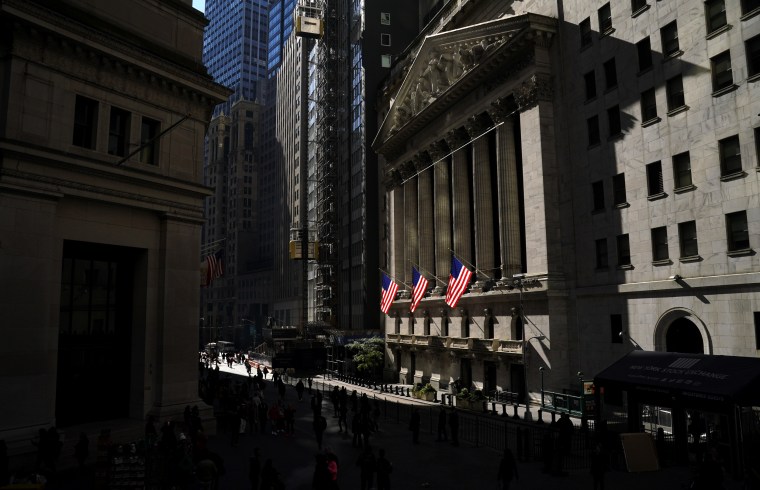Another government shutdown would be bad — and not just for the havoc it could wreak on air travel, tax refunds and the finances of hundreds of thousands of federal workers and contractors.
When the unprecedented 35-day-long partial government shutdown ended on Jan. 25 with a three-week reprieve, political and economic analysts were optimistic that history would not repeat itself with a second shutdown. The assumption was that the costs — both political and economic — would be too great.
“It is difficult to imagine that lawmakers would allow another government shutdown given the political damage the last one did. But if they do, then this time there will also be serious economic damage,” said Mark Zandi, chief economist at Moody’s Analytics.
But with negotiations seemingly stalled as of Monday, investors once again were forced to contemplate the prospect of a shutdown that could leave the American economy in uncharted territory.
“Despite the fact that the shutdowns are indicative of a broken process, the impacts on the broader economy are fairly small,” said Mark Hamrick, senior economic analyst at Bankrate.com. “Elected officials in Washington haven’t given constituents much reason or evidence to inspire confidence, but investors have tended to look past the shutdown episodes as essentially temporary.”
This could change, though, if history repeats itself.
“Shutting down the government again would undermine the already fragile collective psyche,” Zandi warned.
“It is difficult to imagine that lawmakers would allow another government shutdown, given the political damage the last one did. But if they do, then this time there will also be serious economic damage."
A new CNBC/SurveyMonkey Small Business Survey found that the number of small-business owners who characterize current conditions as “good” fell by 3 percentage points, as did the overall index. Respondents who support President Donald Trump, though, exhibited a greater drop in optimism.
”Confidence levels are off their peak from 2018, and recent market volatility and political uncertainty may have made them more fragile," Laura Wronski, senior research scientist at SurveyMonkey, told CNBC.
Wall Street already has to worry about lower global growth and trade tensions with China, and a shutdown would magnify its concerns about these other factors. “Investors are clearly nervous, and most business and consumer sentiment surveys show that confidence is flagging,” Zandi said.
“A renewed shutdown that continued into March might threaten programs such as food stamps, which would have a more material effect on personal consumption,” said Dominic White, chief economist at Absolute Strategy in London.
A second shutdown also might mean that people will have to wait longer for their tax refunds, which would not bode well for consumer confidence and spending ability. “No doubt the IRS was dealt a setback by the first shutdown getting prepared for tax filing season,” Hamrick said. “It isn’t clear how a second shutdown would affect income tax filing, but it certainly won’t help.”
With congressional leaders at loggerheads and no easy way out of the impasse in sight, the bigger fear is that this brinkmanship could foreshadow far more serious dysfunction.
“That lawmakers can’t seem to keep the government open for very long doesn’t augur well for the upcoming battle over raising the Treasury debt limit,” Zandi said. "Each time we have approached the debt limit in recent years, the closer lawmakers have gotten to breaching it."
In a Jan. 29 interview with CNN, Sen. Lindsey Graham, R-S.C., a staunch Trump supporter, suggested that the White House’s insistence on funding for a southern border wall could spill over into the already-fraught issue of raising the debt ceiling.
“My thought is while we're talking about all these things that are coming due pretty soon, let's think bigger rather than smaller,” Graham said.
Conflating the two actually would be an extraordinarily risky move, economists say.
“This would be a catastrophic error as it would roil global financial markets, resulting in meaningfully higher interest rates on Treasury bonds and cost taxpayers for years — if not decades — to come,” Zandi said.
“The bigger risk really concerns the debt ceiling negotiations and the possibility of a ‘technical’ default on Treasury bills,” White said. A sense that the government is lurching from one crisis to the next could undermine already shaky investor confidence, he added.
“Financial markets still haven’t fully gotten over December’s volatility,” White said.
The current debt ceiling suspension expires March 1; after that, the Treasury Department will need to undertake so-called extraordinary measures to keep the country’s bills paid. It isn’t clear for how long this strategy would work.
House Ways and Means Committee Chairman Richard Neal, D-Mass., sent Treasury Secretary Steven Mnuchin a letter last month requesting an update, pointing out that corporate tax cuts and shutdown-related delays at the IRS could result in the Treasury collecting less revenue than expected. A smaller influx of funds would give the government a shorter window of time before it runs out of money.
“If the president chooses to engage in brinkmanship on the debt limit, as he did on the shutdown, the market reaction and the cost to our economy would likely be far larger than the 0.02 reduction in GDP that [the Congressional Budget Office] attributed to the shutdown,” Neal warned in his letter.
Hamrick warned, “Failing to raise the debt ceiling is a red line that they cannot cross or else risk a large threat to financial markets.”
